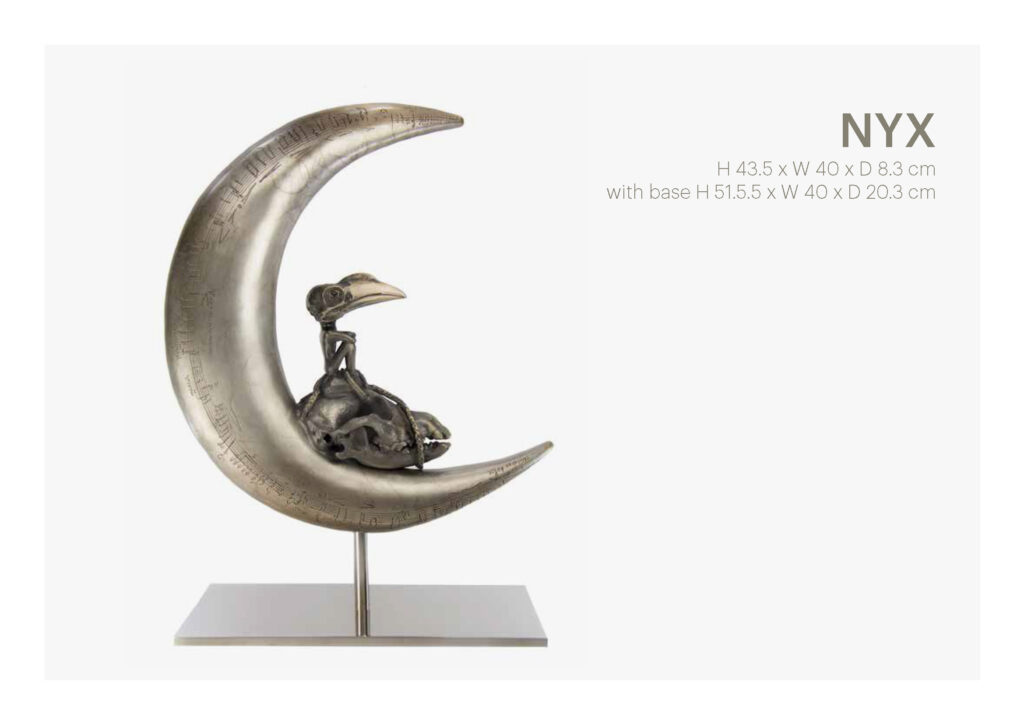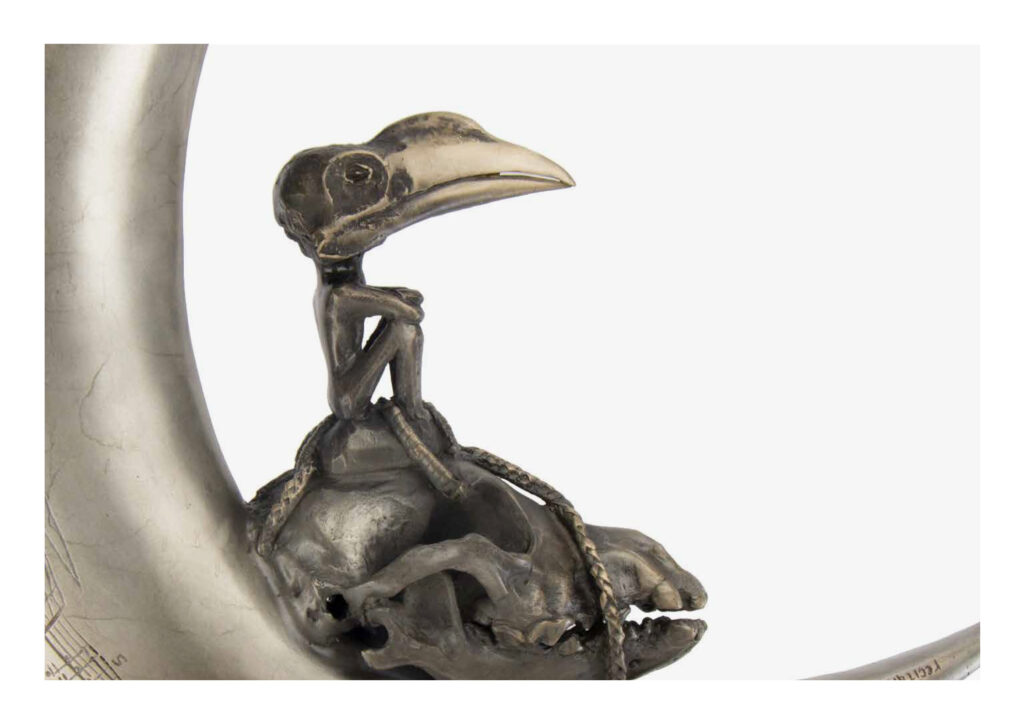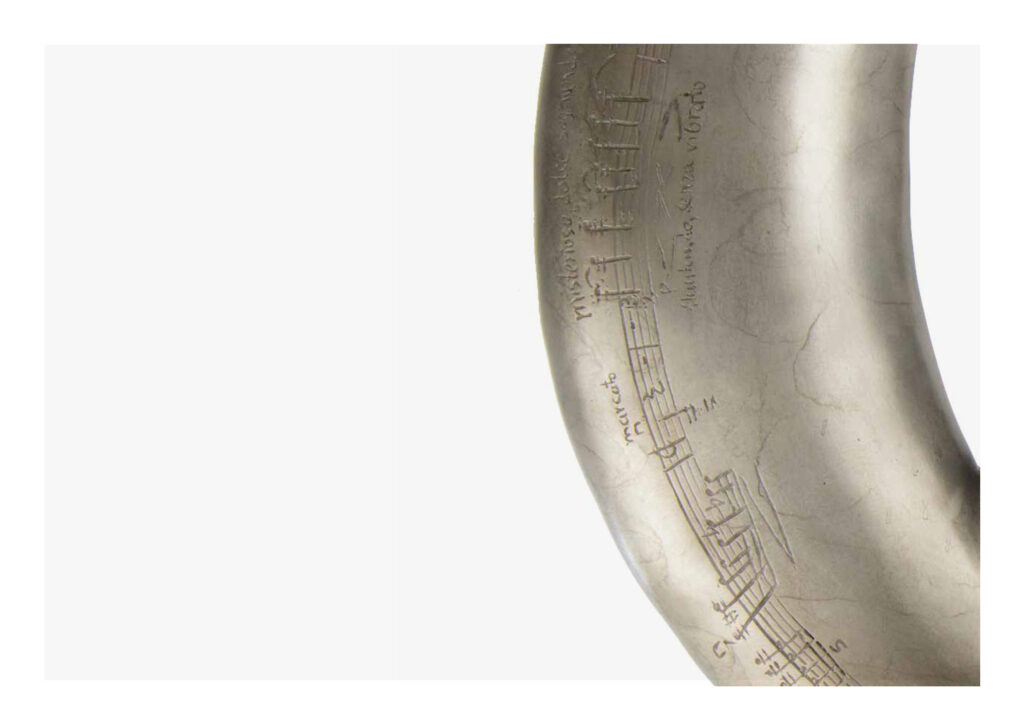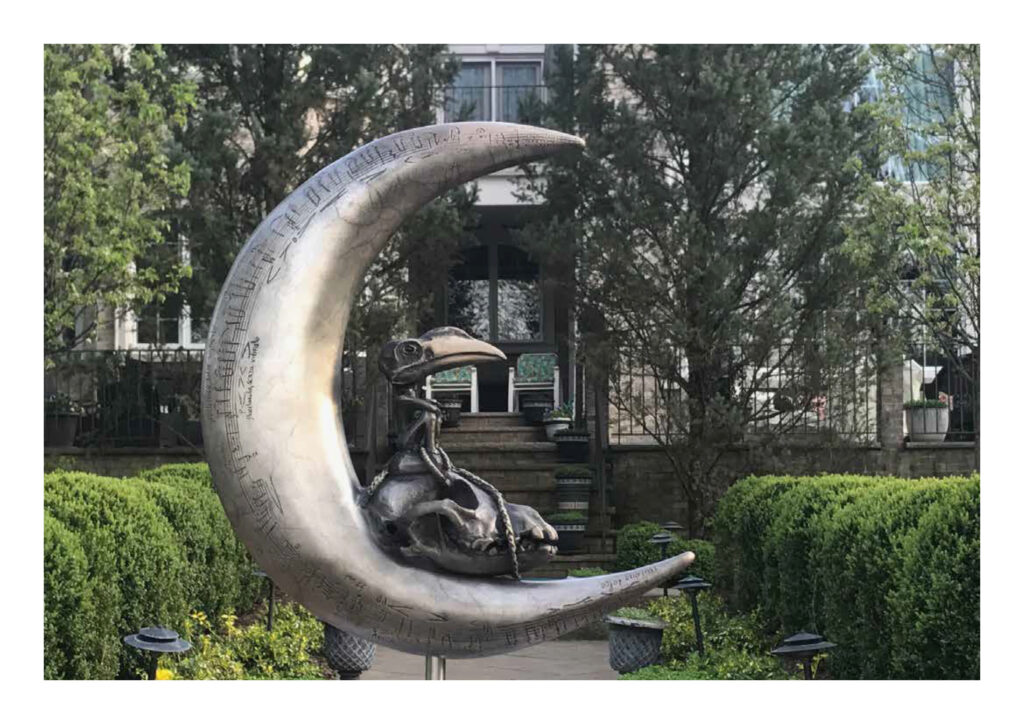Listen to Curatorial Text • Read Curatorial Text
Music: Concerto for VIolon and Orchestra no. 4 “Nyx: Fractured Dreams”




Teeming with archaic symbols and cryptic references, the aesthetic of Auerbach’s sculpture NYX invites us into an intellectual and spiritual pilgrimage, one resonating with ancient wisdom and cosmic harmony. The sculpture’s reference to Nyx, the Greek primordial goddess of the night, hints at existence’s profound mystery. In Orphic cosmogonies — a set of ancient Greek religious beliefs — Nyx becomes an unapproachable and ineffable mother of destinies.
Observing the figure’s contemplative pose, sitting on the skull of another creature, we are brought face to face with an eternal observer who transcends time, culture, and form. This figure, incorporating the bird’s skull as the creature’s head and beak, underscores a duality between life and death, linking directly to nature’s cycles. This theme of duality is not merely aesthetic; it signals a recognition of mortality and the perpetual cycles governing our existence.
The sculpture’s thematic complexity continues with the moon’s presence, historically aligned with femininity, the subconscious, and life’s ebb and flow. It alludes to the alchemical process of solvé et coagula, a phrase meaning dissolving and coagulating, emphasizing a transformative process within the observer’s psyche between the known and unknown.
The observer’s role in this sculpture creates an ouroboros-like cycle of observation and reflection. It transforms the chimeric figure into a transcendent archetype, embodying the Hermetic axiom, “As above, so below; as below, so above.” This ancient principle suggests a universal symmetry between the macrocosm and microcosm.
Auerbach’s integration of aural elements further enriches the interplay. NYX: Fractured Dreams, Auerbach’s Violin Concerto No. 4, is symbolized by the sculpture’s moon, engraved with the opening lines of the piece. This echoes ancient Pythagorean mystique, seamlessly interweaving auditory with visual elements.
Reflecting musica universalis, or the idea that celestial bodies move in harmony, the work synthesizes NYX’s cosmic harmony with the tangible. Drawing on themes of the feminine, subconscious, and alchemical transformation, it crafts a cryptic poem in bronze.
Auerbach’s sculpture weaves a rich tapestry, inviting us to an intellectual and spiritual journey. With a harmonious interplay of symbolism and aesthetics, NYX serves as a meeting point of past and present that echoes in the chambers of the mind, marking an intriguing convergence of art, myth, and contemplation.
